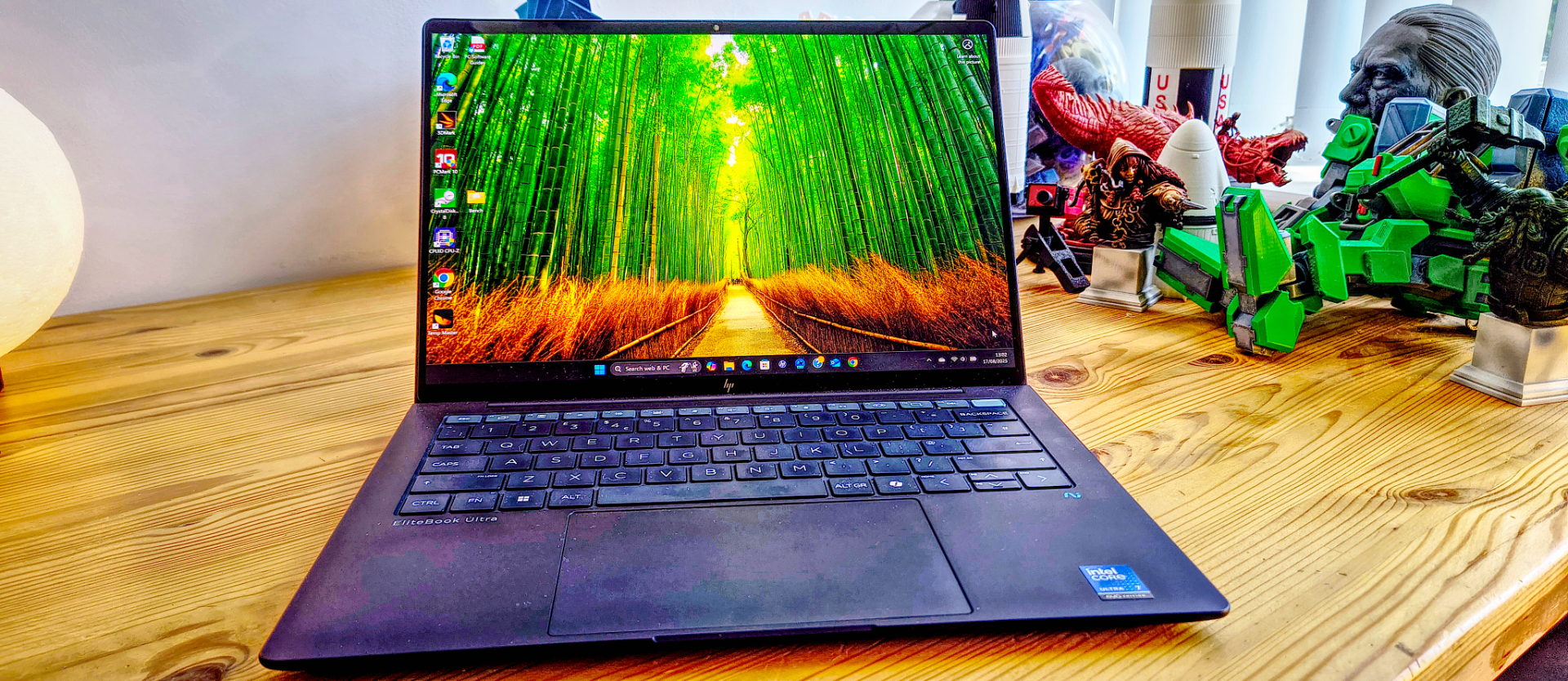TechRadar Verdict
Probably the best Ultra 200 series laptop I’ve seen so far, not that I’ve experienced that many. It’s got plenty of power, three USB4 ports and a gorgeous screen. I’m less convinced by the thickly applied bloatware and the devious screw choices, so it isn’t perfect.
Pros
- +
Latest Intel silicon
- +
Exceptional battery life
- +
Gorgeous screen
- +
Sleek design
Cons
- -
Underwhelming CPU performance
- -
2TB storage is the maximum
- -
Annoying case screws
- -
A docking station is required
Why you can trust TechRadar
HP EliteBook Ultra G1i: 30-second review
In a year defined by the rise of AI PCs, HP’s EliteBook Ultra G1i arrives as a sleek, Copilot+ certified business laptop that promises to redefine mobile productivity. Built around Intel’s new Core Ultra 7 258V processor, it’s not just a spec bump—it’s a strategic leap into the AI-first era. With a dedicated neural processing unit (NPU) delivering up to 48 TOPS of performance, the G1i is designed to handle local AI tasks like Recall, Cocreator, and Live Captions without relying on the cloud. It’s HP’s answer to the evolving demands of hybrid work, where speed, security, and intelligent assistance are no longer luxuries—they’re expectations.
But Intel isn’t the only player in town. AMD’s Ryzen AI 300 series, particularly the Ryzen AI 9 Pro 365, powers HP’s EliteBook X G1a—a similarly priced, similarly specced machine that offers its own take on AI-enhanced business computing. With a slightly higher NPU throughput (50 TOPS) and the potent Radeon 880M integrated GPU, the AMD variant positions itself as a performance-first alternative, especially for users who lean into creative workloads or multitasking-heavy environments.
Both machines feature a stunning 14-inch 2.8K OLED display with 120Hz refresh rates, 32GB of LPDDR5x RAM, and up to 1TB of SSD storage. They’re built with sustainability in mind, using recycled magnesium and plastics, and they share HP’s enterprise-grade security suite—including Wolf Security, presence detection, and biometric authentication. The differences, however, begin to emerge in the finer details: the Intel-powered G1i is lighter (1.19 kg vs. 1.49 kg), offers better battery life (~16.5 hours vs. ~14–15 hours), and includes three Thunderbolt 4 ports for high-speed connectivity. The AMD-powered X G1a counters with more legacy-friendly ports, including HDMI and dual USB-A, which may appeal to users who prefer plug-and-play simplicity over dongle dependency.
From a business perspective, the choice between these two machines isn’t just about raw specs—it’s about workflow alignment. The G1i excels in mobility, conferencing, and battery endurance, making it ideal for executives, consultants, and frequent travellers. The X G1a, meanwhile, leans into performance and versatility, with AMD’s superior GPU and slightly stronger AI inference capabilities offering an edge for data analysts, designers, and power users.
As AI PCs begin to reshape the laptop landscape, HP’s dual approach—offering both Intel and AMD flagships—gives business users a rare opportunity to choose their path. The EliteBook Ultra G1i may be the more polished and portable of the two, but the EliteBook X G1a is a compelling alternative that refuses to be overshadowed. In this review, we’ll explore how these machines stack up in real-world use and which one earns its place as the ultimate AI-powered business companion.
If you want an Intel-powered system, this might be one of the best business laptops around, although in terms of graphics performance, AMD still has the high ground.
HP EliteBook Ultra G1i: Price and availability
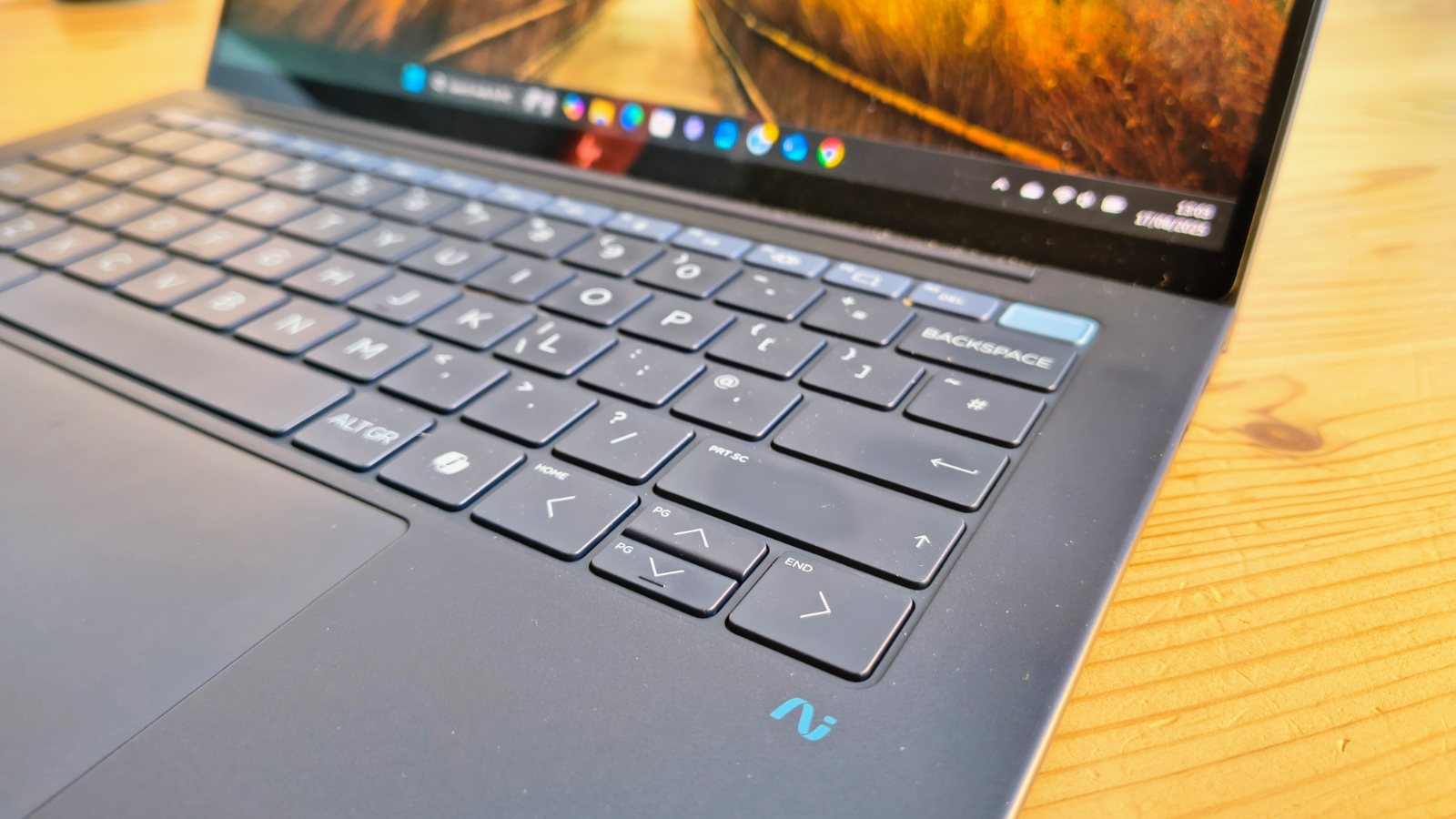
- How much does it cost? From $1900,/£1500/€1,699
- When is it out? Available now
- Where can you get it? Direct from HP or via Amazon
As is typical with corporate sellers like HP, the HP EliteBook Ultra G1i 14-inch Notebook Next Gen AI PC Wolf Pro Security Edition, to give it its full title, is available in a wide range of SKUs depending on the processor, memory and storage you want.
Sign up to the TechRadar Pro newsletter to get all the top news, opinion, features and guidance your business needs to succeed!
In the US, these start at around $1899 for a model with the Intel Core Ultra 5 228V processor, moving up to $2,299 for one with the Intel Core Ultra 7 268V chip, 32GB of RAM and 1TB of storage.
The review hardware covered here, using the Core Ultra 7 258V CPU and 32GB of RAM, is $2099 direct from HP.
The UK models start at £1,559.99, but for that you get an Intel Core Ultra 7 256V CPU, 16GB of RAM and 256GB of storage. And, the review spec hardware is only £1,631.99. It should be noted that in the US, this machine has 1TB of storage, but in the UK, it comes with only 512GB.
The products that this machine competes directly with are the Lenovo ThinkPad X1 Carbon Gen 11, which typically sells for $2,099 in the US, £1,599 in the UK, and €1,799 in the EU. The Dell XPS 13 Plus is priced from $1,999 in the US, £1,549 in the UK, and €1,749 in the EU. And finally, the Acer Swift Edge 16, which is priced at approximately $1,799 in the US, £1,449 in the UK, and €1,649 in the EU.
From that perspective, the HP EliteBook Ultra G1i looks pricey, but a balancing factor is that Lenovo and Dell use older Intel Core i7-1365U CPUs, and the Acer is an AMD machine built around the AMD Ryzen 9 7940HS.
Therefore, given that the HP uses the latest Intel technology, its price, especially outside of the US, seems not unreasonable.
- Value: 4 / 5
HP EliteBook Ultra G1i: Specs
Category | Item |
|---|---|
Processor | Intel Core Ultra 7 258V (2.2 GHz base, up to 4.8 GHz Turbo, 12MB L3 cache, 8 cores, 8 threads) |
NPU Performance | 47 TOPS (Neural Processing Unit for local AI tasks) |
Memory | 32GB LPDDR5x-8533 MT/s (soldered, non-upgradable) |
Storage | 512GB PCIe Gen 4 NVMe SSD (TLC or OPAL2 encrypted options) |
Graphics | Intel Arc Graphics 140V (integrated) |
Display | 14" OLED, 2.8K (2880 × 1800), 120Hz, touchscreen, 400 nits, 100% DCI-P3, 16:10 aspect ratio |
Camera | 9MP IR AI camera with privacy shutter, auto framing, eye contact correction |
Audio | Quad stereo speakers, dual microphones, Poly Studio tuning, AI noise reduction |
Ports | 3x Thunderbolt 4 (USB-C), 1x USB-A (10Gbps charging), 1x headphone/mic combo |
Wireless | Intel Wi-Fi 7 BE201 (2x2), Bluetooth 5.4 |
Battery | 6-cell, 64Wh Li-ion polymer; up to 16.5 hours battery life; 50% charge in 30 minutes |
Operating System | Windows 11 Pro |
Security | HP Wolf Security, TPM 2.0, fingerprint sensor, auto lock/awake, onlook detector |
Build & Design | Magnesium chassis, Atmosphere Blue finish, 1.19 kg weight, 31.37 × 21.72 × 0.91 cm |
Sustainability | Up to 90% recycled magnesium, 50% recycled plastic in keycaps, recyclable packaging |
Warranty | 1-year limited warranty with HP Wolf Pro Security Edition |
HP EliteBook Ultra G1i: Design
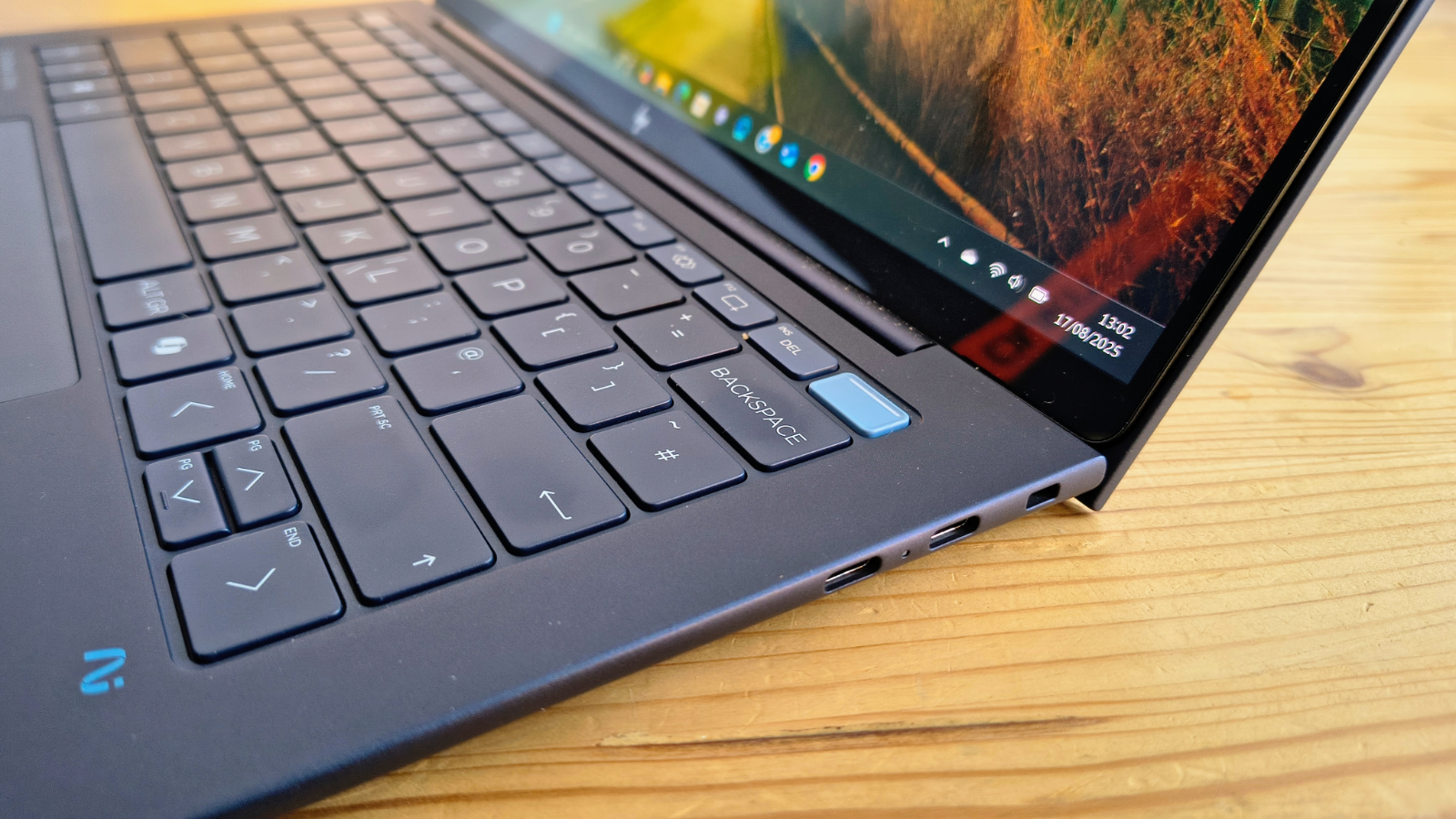
- Thin and elegant
- Lots of USB, but no HDMI out
- Stunning OLED screen
- Annoying scews
The HP EliteBook Ultra G1i 14-inch Notebook is a testament to modern design and engineering, offering a sleek and sophisticated appearance that is both functional and aesthetically pleasing. One of the most notable features of this laptop is its slim case. The device boasts a remarkably thin profile, making it highly portable and easy to carry around. This slim design does not compromise on durability, as the case is constructed from high-quality materials that provide both strength and a premium feel.
However, this thin aspect did impact one of the USB ports, in an unexpected way. In terms of connectivity, the HP EliteBook Ultra G1i is equipped with a variety of USB ports that cater to different needs. The inclusion of multiple USB Type-C ports (USB4/Thunderbolt) ensures that users can easily connect to a range of peripherals and accessories, from external storage devices to display adapters. These ports support high-speed data transfer, which is essential for professionals who require efficient and reliable performance.
Additionally, the laptop features a single USB Type-A port, providing compatibility with older devices and accessories. But to give some detail on just how thin this machine is, the USB-A port is too thick, so it has a sprung relief structure that expands when you plug things in. I’ve seen this done with LAN ports before, for the same reason, but I’ve never seen a USB-A port done this way.
What’s missing here is an HDMI or LAN out, as HP clearly see that as an opportunity to sell you a docking station, or two.
In my initial reaction to the exterior of this laptop, the OLED screen of the HP EliteBook Ultra G1i is another standout feature that enhances the overall user experience. The 14-inch display offers vibrant colours and deep blacks, providing an immersive visual experience that is ideal for both work and entertainment. The high resolution of the OLED screen ensures that images and text are sharp and clear, making it easier to work on detailed tasks such as graphic design or video editing. The touch functionality of the display adds an extra layer of convenience, allowing users to interact with their content in a more intuitive and natural way.
Overall, the design of the HP EliteBook Ultra G1i 14-inch Notebook is a blend of elegance and practicality. The slim case, versatile USB ports, and high-quality OLED screen come together to create a device that is not only visually appealing but also highly functional. This laptop is well-suited for professionals who require a reliable and stylish device that can keep up with their demanding workloads. While the design is impressive, it is presented in a manner that is understated and professional, making it a suitable choice for a variety of settings, from corporate offices to creative studios.
However, there is one aspect that I didn’t care for, and that was the user upgradability, or rather, HP’s clumsy attempt to dissuade its customers from going inside and upgrading the storage.
On the face of it, everything seems straightforward enough, as four screws hold the underside onto the laptop. The user manual mentions needing a Philips P1 screwdriver for maintenance. The screws aren’t Philips at all. They’re an incredibly tiny T5 Torx variety, for which I was lucky enough to own a screwdriver bit to extract. Most people wouldn’t have this tool unless they are an idiot like me, who takes electronics apart.
Once these are loosened, you can carefully use a spudger to open the clips that hold the underside and eventually detach it.
Your reward for doing this is that you can replace the battery, upgrade the WiFi and switch the storage, but the memory is surface-mounted.
Upgrade options on the EliteBook Ultra G1i are, frankly, limited. The 32GB of LPDDR5x memory is soldered directly to the motherboard, which means what you buy is what you’re stuck with—no room for expansion down the line. That’s not unusual for ultra-thin business laptops, but it’s worth noting for users who like to future-proof their machines. On the plus side, the SSD is user-replaceable. It uses a standard M.2 2280 PCIe Gen 4 slot, so swapping out the 512GB drive for a 1TB or even 2TB model is straightforward.
The M2. NVMe is a whole 2280-sized device, so you should be able to upgrade it to 2TB at a minimum. However, since it’s the only slot, you will need a USB-C M.2 caddy to copy the existing OS and expand the partition.
Kingston and other vendors offer compatible drives with read speeds up to 7000MB/s, which could give the system a noticeable boost in responsiveness. Just don’t expect to tinker with RAM or add a second drive—this is a tightly integrated machine built for sleekness over modularity.However, there is one aspect that I didn’t care for, and that was the user upgradability, or rather, HP’s clumsy attempt to dissuade its customers from going inside and upgrading the storage.
On the face of it, everything seems straightforward enough, as four screws hold the underside onto the laptop. The user manual mentions needing a Philips P1 screwdriver for maintenance. The screws aren’t Philips at all. They’re an incredibly tiny T5 Torx variety, for which I was lucky enough to own a screwdriver bit to extract. Most people wouldn’t have this tool unless they are an idiot like me, who takes electronics apart.
Once these are loosened, you can carefully use a spudger to open the clips that hold the underside and eventually detach it.
Your reward for doing this is that you can replace the battery, upgrade the WiFi and switch the storage, but the memory is surface-mounted.
Upgrade options on the EliteBook Ultra G1i are, frankly, limited. The 32GB of LPDDR5x memory is soldered directly to the motherboard, which means what you buy is what you’re stuck with—no room for expansion down the line. That’s not unusual for ultra-thin business laptops, but it’s worth noting for users who like to future-proof their machines. On the plus side, the SSD is user-replaceable. It uses a standard M.2 2280 PCIe Gen 4 slot, so swapping out the 512GB drive for a 1TB or even 2TB model is straightforward.
The M2. NVMe is a whole 2280-sized device, so you should be able to upgrade it to 2TB at a minimum. However, since it’s the only slot, you will need a USB-C M.2 caddy to copy the existing OS and expand the partition.
Kingston and other vendors offer compatible drives with read speeds up to 7000MB/s, which could give the system a noticeable boost in responsiveness. Just don’t expect to tinker with RAM or add a second drive—this is a tightly integrated machine built for sleekness over modularity.
- Design: 4 / 5
HP EliteBook Ultra G1i: Hardware
- Intel Core Ultra 200 series CPU
- Dock-friendly ports
Intel’s Core Ultra 7 258V is a curious beast. On paper, it’s a forward-looking chip built for the AI PC era, with a dedicated NPU capable of delivering up to 47 TOPS of performance.
That’s more than enough grunt for Microsoft’s Copilot+ features like Recall and Cocreator, and it does so without leaning on the cloud—a win for privacy and responsiveness.
The chip’s hybrid architecture, combining performance and efficiency cores, keeps thermals in check and battery life impressive. In the EliteBook Ultra G1i, that translates to over 18 hours of real-world use, which is no small feat.
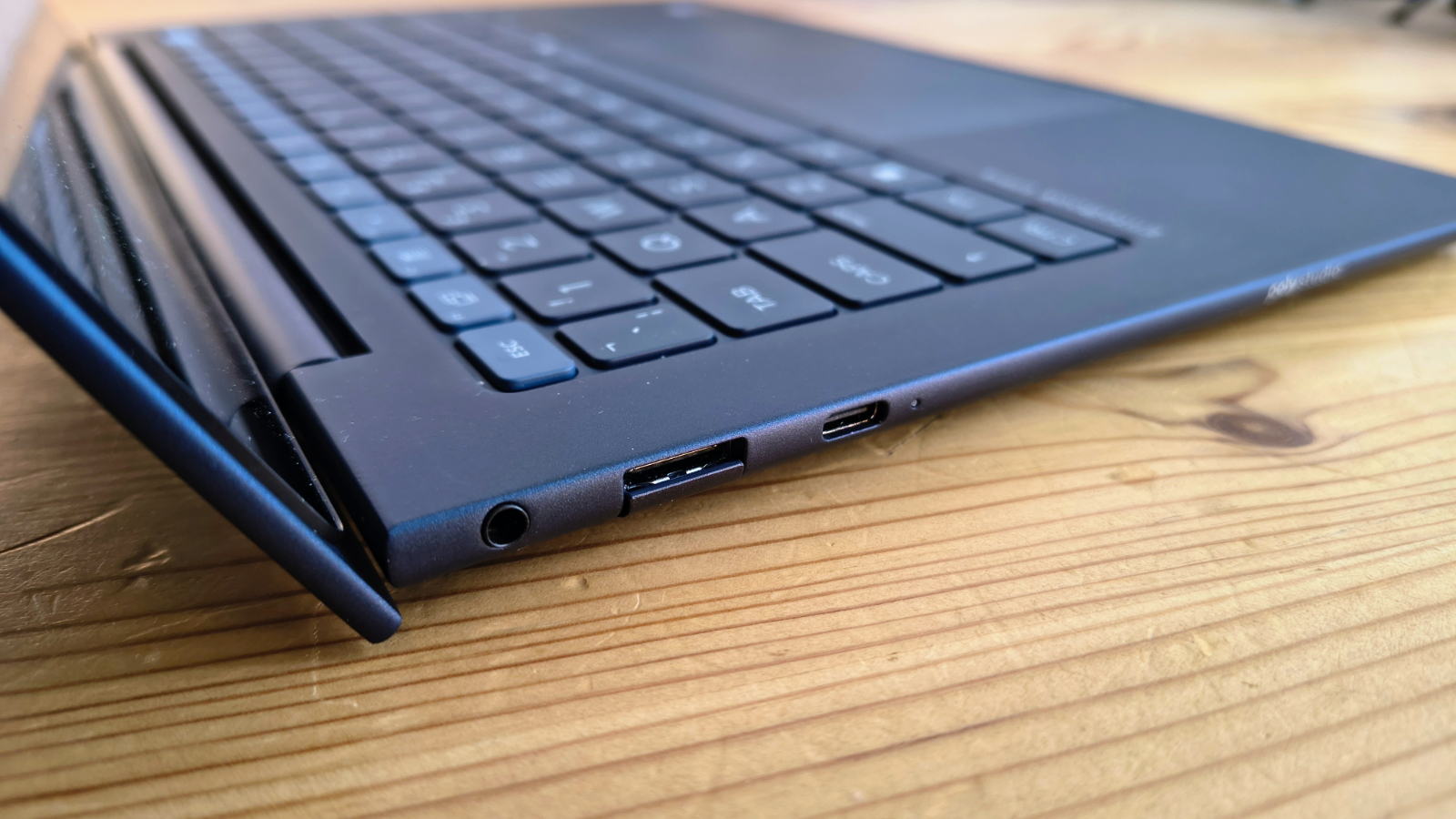
But it’s not without quirks. Intel’s decision to drop Hyper-Threading means that while the 258V handles typical business workloads with ease, it can stumble in heavily threaded tasks where AMD’s Ryzen AI 9 Pro 365 pulls ahead. The integrated Arc 140V graphics are a step up from previous generations, but still not a match for AMD’s Radeon 880M in GPU-heavy scenarios. And while the chip supports blisteringly fast LPDDR5x memory, it’s soldered—so what you buy is what you’re stuck with.
What is nice on this system is that you get three full 40Gbps USB4/Thunderbolt ports, giving you the potential of 120Gbps of external bandwidth. In theory, and I don’t recommend doing this, you could hang three Thunderbolt 4 docks from this machine, with all the devices those would support.
Having three does offer some alternatives to docks, however. There are USB4/Thunderbolt to 10GbE LAN adapters, and also HDMI or DisplayPort from Thunderbolt. If you want a high-speed LAN and a second display, it isn’t necessary to get a dock. But, given the high cost of some adapters, getting one and keeping the other ports available might be a more cost-effective solution.
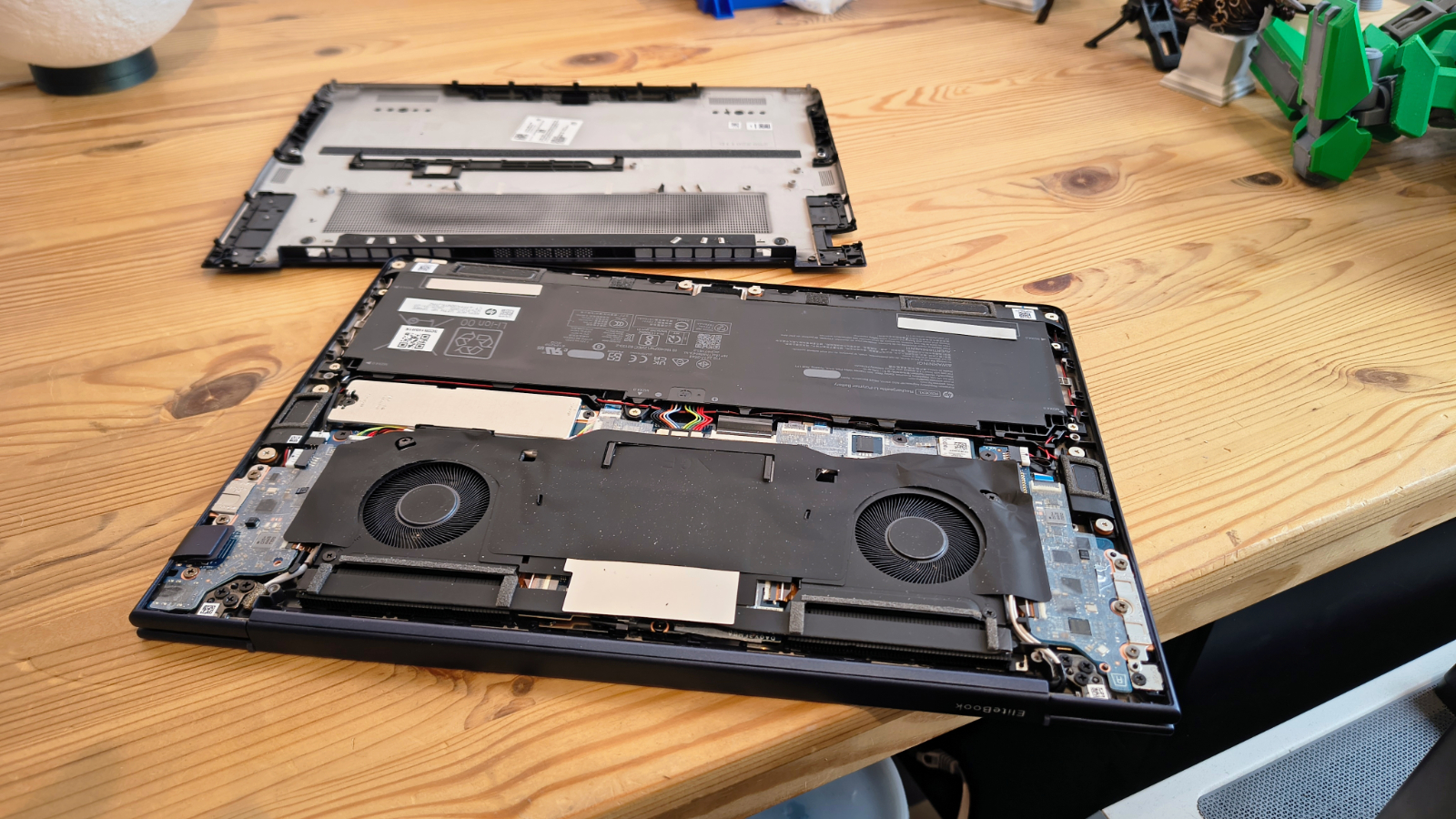
The other hardware features of this machine are all top-notch, with a 9MP IR AI camera that can be used to identify the owner without a password or pin. The WiFi module is an Intel BE201 (2x2) supporting WiFi 7, easily allowing 1400Gbps connections in my testing.
And, if audio is important, the HP EliteBook Ultra G1i has Quad stereo speakers, dual microphones, Poly Studio tuning and AI noise reduction.
From a hardware perspective, with the possible exception of limitations of the Intel Core Ultra 200 series, there isn’t much to complain about in this spec.
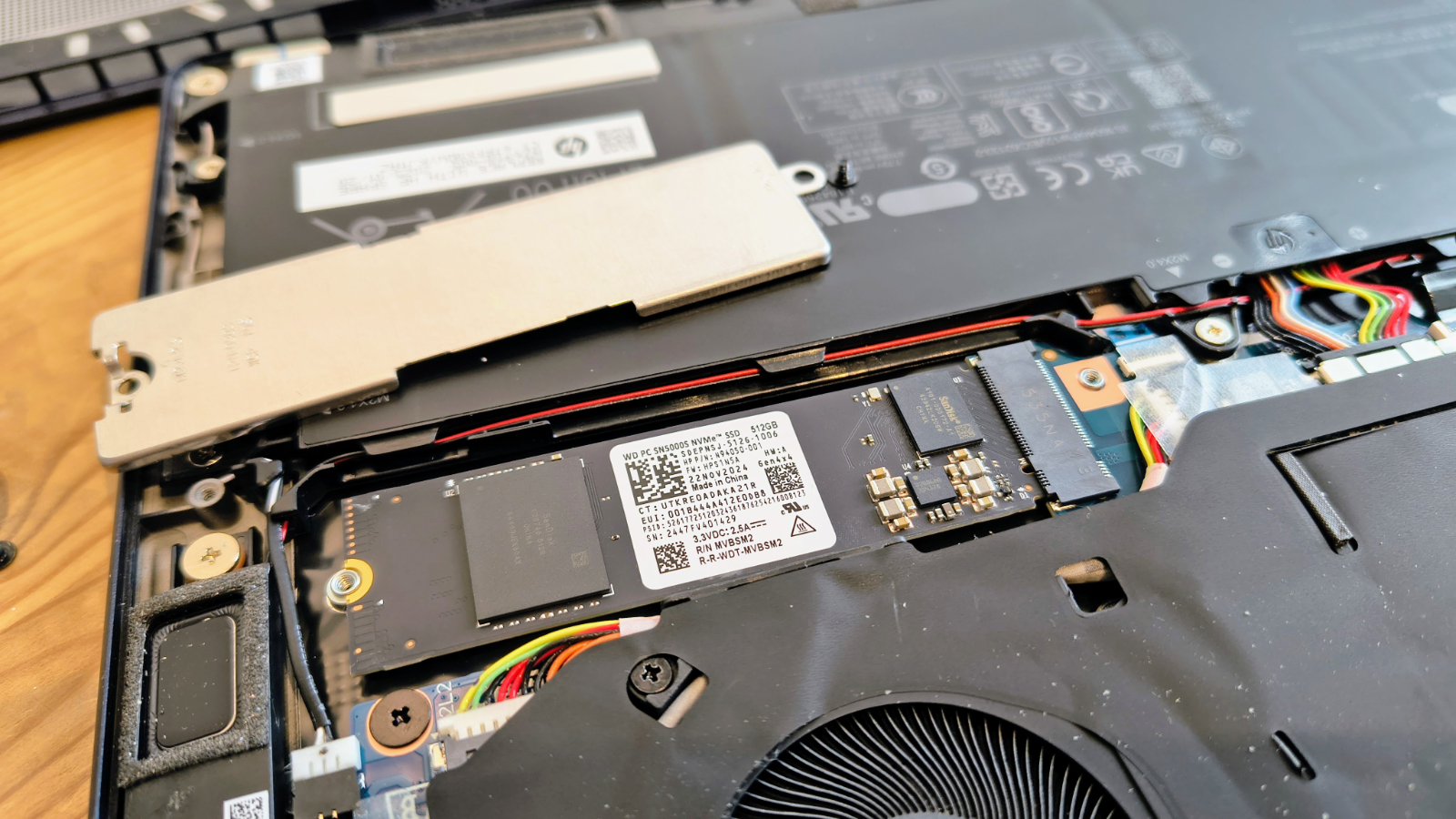
- Hardware: 4 / 5
HP EliteBook Ultra G1i: Performance
Laptops | Header Cell - Column 1 | HP EliteBook Ultra G1i | Dell Pro 14 Premium |
|---|---|---|---|
CPU | Row 0 - Cell 1 | Intel Core Ultra 7 258V | Intel Core Ultra 7 268V |
Cores/Threads | Row 1 - Cell 1 | 8C 8T | 8C 8T |
TPD | Row 2 - Cell 1 | 17W-37W | 17W-37W |
RAM | Row 3 - Cell 1 | 32GB DDR5 | 32GB LPDDR5X |
SSD | Row 4 - Cell 1 | 500GB WD Blue SN5000 | 1TB PVC10 SK Hynix |
Graphics | Row 5 - Cell 1 | Intel Arc 140V GPU | Intel Arc 140V GPU |
NPU | Row 6 - Cell 1 | Intel NPU (48 TOPS) | Intel NPU (48 TOPS) |
3DMark | WildLife | 19,894 | 20,738 |
| Row 8 - Cell 0 | FireStrike | 7394 | 9375 |
| Row 9 - Cell 0 | TimeSpy | 3661 | 4335 |
| Row 10 - Cell 0 | Steel Nomad.L | 2912 | 2899 |
CineBench23 | Single | 1837 | 1831 |
| Row 12 - Cell 0 | Multi | 8392 | 9567 |
| Row 13 - Cell 0 | Ratio | 4.57 | 5.23 |
CineBench24 | Single | 121 | 125 |
| Row 15 - Cell 0 | Multi | 538 | 665 |
| Row 16 - Cell 0 | Ratio | 3.65 | 5.31 |
GeekBench 6 | Single | 2716 | 2531 |
| Row 18 - Cell 0 | Multi | 10910 | 11143 |
| Row 19 - Cell 0 | OpenCL | 29520 | 30382 |
| Row 20 - Cell 0 | Vulkan | 33002 | 34370 |
CrystalDIsk | Read MB/s | 6352 | 6569 |
| Row 22 - Cell 0 | Write MB/s | 4199 | 5844 |
PCMark 10 | Office | 7071 | 7232 |
| Row 24 - Cell 0 | Battery | 18h 13min | 21h 23m |
Battery | Whr | 64 | 60 |
WEI | Score | 8.8 | 8.8 |
For our comparison, I’ve pitted the HP EliteBook Ultra G1i against a Dell Pro 14 Premium, which uses the slightly more powerful Intel Core Ultra 7 268V. I did this mostly to explain to anyone who might consider getting the HP EliteBook Ultra G1i with the Core Ultra 7 268V CPU what the extra cost gains them. Depending on the test, it ranges from a few percentage points to marginally more in a few select tests.
What I find interesting is that Dell managed its battery power more effectively, lasting longer on a smaller capacity battery. That said, both of these machines are exceptionally good for those who need a machine to last more than a typical working day, and it’s certainly a strength of the Intel Core Ultra 200 series.
Less wonderful is the single-core and multi-threaded performance, which doesn’t compare well with the latest AMD offerings. It’s better than the Core Ultra 100 series performance, but that was dire in models.
The part I’ve yet to understand is why the Core Ultra 7 258V and 268V both ended up with the Arc 140V GPU, when the superior Arc 140T with more shaders was available.
AMD has now released the AMD Radeon 8060S on the Ryzen AI Max+ 3XX CPUs, and that’s more than three times the performance of the Arc 140v used here.
Had Intel used the 140T instead, it might have looked better, although that couldn’t compete with the 40 pipelines and 2560 shaders on the Radeon 8060S.
These benchmarks also reveal that HP needs to get better NVMe drives than the WD Blue that they used in our review model.
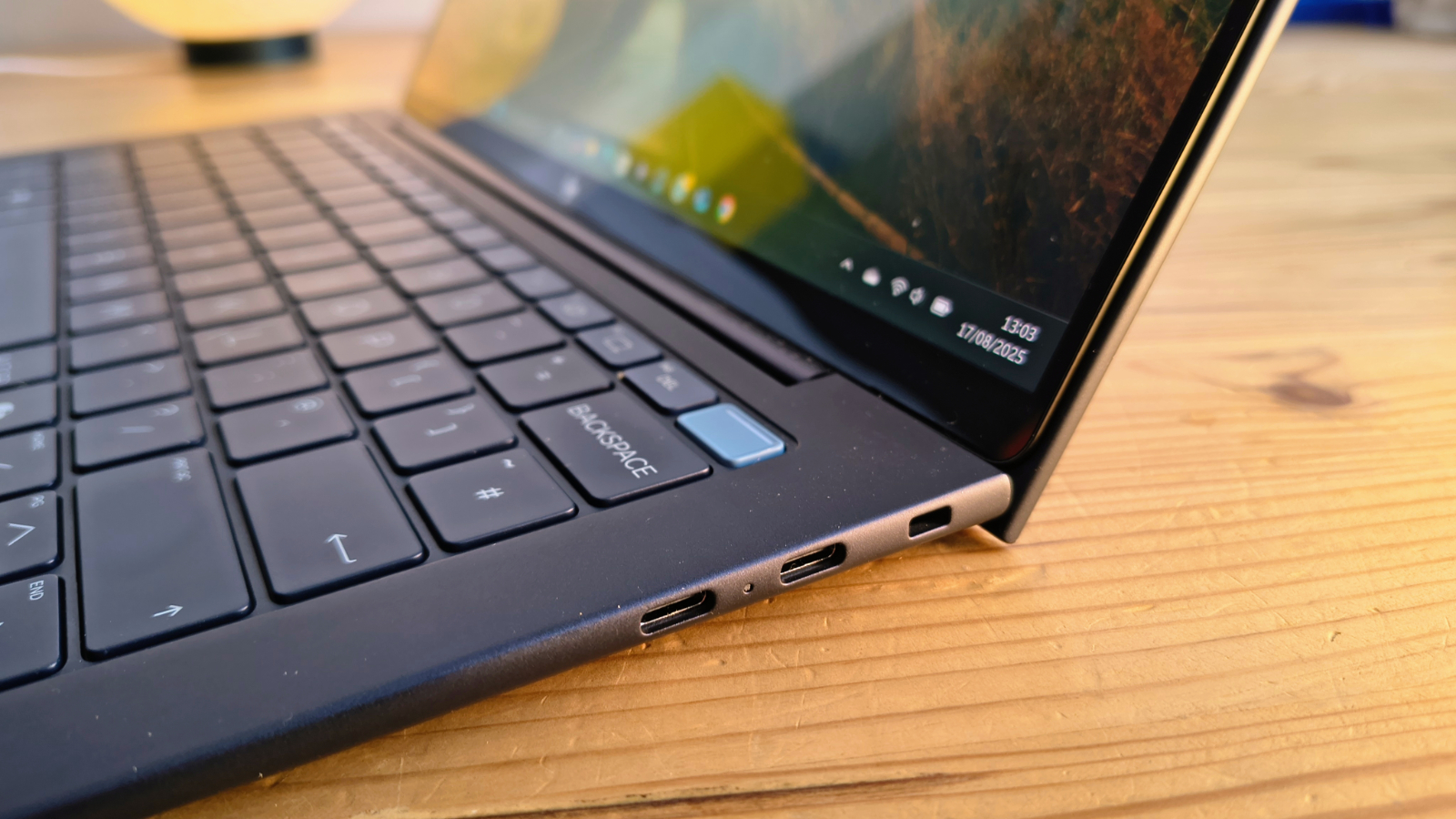
- Performance: 4 / 5
HP EliteBook Ultra G1i: Final verdict
Lots has been written about how Intel burned its performance bridges to deliver exceptional power efficiency on the Core Ultra 200 series, and this machine somewhat underlines those views in dayglo marker pen.
That said, for those who use laptops like the HP EliteBook Ultra G1i, that it isn't as powerful as an older 13th-generation Intel mobile chip in some scenarios is pure semantics.
For them, this is an elegant and powerful tool that is easy to carry, recharges quickly and lasts an inordinate amount of time on its battery.
My only niggle with it is that HP appear to have soured with 3rd party bloatware on its machines, and has now created a swath of its own branded software to bug its customers with. These include its own AI Companion (Beta), the HP support Assistant, and now it has created HP Wolf Security. This is a comprehensive endpoint security solution designed to protect PCs and other devices from cyber threats. It offers a range of features, including threat containment, next-generation antivirus, credential protection, and browser isolation.
That all sounds wonderful, but unless it's perfectly aligned with the overarching corporate security strategy of companies that buy this machine, they're likely not to use it.
And, it's an income stream for HP when it's all done and dusted.
During my review of the HP EliteBook Ultra G1i, the HP Assistant sent me nine messages on various subjects, and I received at least another four from Wolf Security asking me to register. It's the software equivalent of repeatedly meeting Ned Ryerson in Groundhog Day, and it's exceptionally annoying.
Despite that, the HP EliteBook Ultra G1i is a classy ultrabook that delivers on its core promises, and I found it generally enjoyable to use for office applications.
The price is likely $100-200 higher than it should be, but it's unlikely to deter corporations that have already invested heavily in HP hardware.
Should you buy a HP EliteBook Ultra G1i?
Value | The latest technology has a price premium, sadly. | 4 / 5 |
Design | Thin and lightweight, perfect for those on the go. | 4 / 5 |
Hardware | 200 series CPU, DDR5 and ARC GPU make for power efficiency, but limited upgrades. | 4 / 5 |
Performance | Good at single tasks and graphics, less wonderful at multitasking, but excellent for longevity on battery | 4 / 5 |
Overall | Powerful enough for most laptop users | 4.5 / 5 |
Buy it if...
You need all-day battery life
Unless you work more than 18 hours a day, the battery on this machine should get you through a working day.
You use Copilot
This is an official Copilot laptop, having been given the blessing of Microsoft and an Intel NPU-capable processor. I’m sure better AI solutions that don’t use local processing are available, but the choice is yours.
Don't buy it if...
You want upgradable RAM
The memory is soldered on the mainboard during manufacture and cannot be upgraded. Users seeking long-term flexibility or future-proofing may find this limiting, particularly as workloads become more demanding over time.
You don’t want a dock
The limited ports on this laptop dictate that if you want to connect multiple screens or to a wired LAN, then a Thunderbolt dock is a necessity.
For more options, we reviewed the best laptops for work and gaming and the best laptops for working from home.
Mark is an expert on 3D printers, drones and phones. He also covers storage, including SSDs, NAS drives and portable hard drives. He started writing in 1986 and has contributed to MicroMart, PC Format, 3D World, among others.
You must confirm your public display name before commenting
Please logout and then login again, you will then be prompted to enter your display name.
